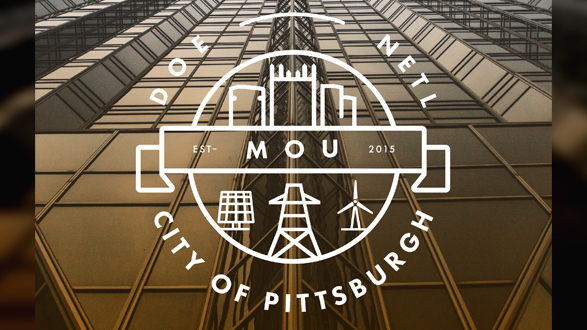
The United States (U.S.) Department of Energy (DOE) and the National Energy Technology Laboratory (NETL) are working in conjunction with the City of Pittsburgh (City) to transform how energy is produced, transported, and consumed in the City. This transformation will rely on 21st Century Energy Infrastructure designs, which leverage advanced technology and design techniques to modernize energy infrastructure, create new business models and markets, and expand technology research and development opportunities.
Achieving this vision will require developing solutions that are unique to the City: its climate, topography, energy needs, resources, and existing infrastructure. In this way, the City will demonstrate what the American “City of the Future” looks like, with all its attendant environmental, economic, and job-creation benefits. It will also serve as a template for other cities seeking to reinvent their energy systems.
The first step in the process of transforming the energy landscape of a metropolitan area is understanding current usage patterns, e.g., how much energy is used by what sector, seasonal variations in usage, and what types of fuel types are used. Analyzing these metrics serves three purposes:
- Establishing a baseline for consumption – and by extension, emissions – for comparative purposes in future analyses.
- Allowing identification of major opportunities for emissions reductions and improved efficiencies; and
- Enabling policy makers and investors to prioritize how limited resources are initially deployed.
Following this approach will foster the development of systems that meet the unique needs of a metropolitan area at the lowest cost, and with the greatest impact. Furthermore, implementing these solutions can serve as a proof of concepts that results in additional deployments in nearby locations.
Analyzing the electricity and natural gas consumption data for the City and the surrounding region found the following:
- The City consumed 59.6 trillion British thermal units (Btu) of natural gas an electricity in 2013.
- Natural gas consumption dominates non-transportation energy use, with consumption just over double that of electricity. Most usage occurs during the cold weather months when gas is used to heat buildings.
- Residential and commercial sectors utilize nearly equivalent amounts of energy (47 and 45 percent of total, non-transportation energy use, respectively). Industrial customers constitute the remaining 8 percent.
- Residential and commercial sectors have different energy use characteristics, representing different opportunities for energy savings and emissions reductions. For example, natural gas usage represents 80% of the energy consumed in the residential sector, while the commercial sector, while the commercial sector has a more even split between electricity and natural gas.
- Electricity usage dominate the greenhouse gas (GHG) emissions associated with non-transportation energy use in the City. This is true despite direct use of natural gas (primarily for space heating) being double that of electricity and the relatively low GHG emissions profile of the regions’ electricity mix.
- Seasonal variations in natural gas usage are substantial, with consumption in peak winter months exceeding summer consumption by 9 to 11 times. While peak loads in electricity are less pronounced (only exceeding shoulder month usage by 1.3 to 1.5 times), a strong correlation of electricity load to hot weather exists, which may represent an opportunity.
In addition to the above findings, several regions within the City were identified as high energy usage areas. In some cases, these areas are contiguous, and constitute a significant portion of total usage. Some examples include:
- The contiguous neighborhoods of Downtown, the Strip, Oakland, Uptown, Herron Hill, and Schenley Heights consume the most energy in the City.
- Taken together, these neighborhoods constitute 35% of the City’s electricity consumption, and approaching 50% of all commercial sector electricity consumption in the City.
- Thirty-two percent of all residential natural gas consumption is centralized in five Zone Improvement Plan (ZIP) codes (representing over 13 neighborhoods): 15235, 15221, 15217, 15210, and 15212.
These geographic areas represent opportunities for energy usage reduction. In some cases, action is already being taken through the development or updating of energy districts in these areas or initiatives such as Pittsburgh 2030 District, although an increased focus may be warranted.




